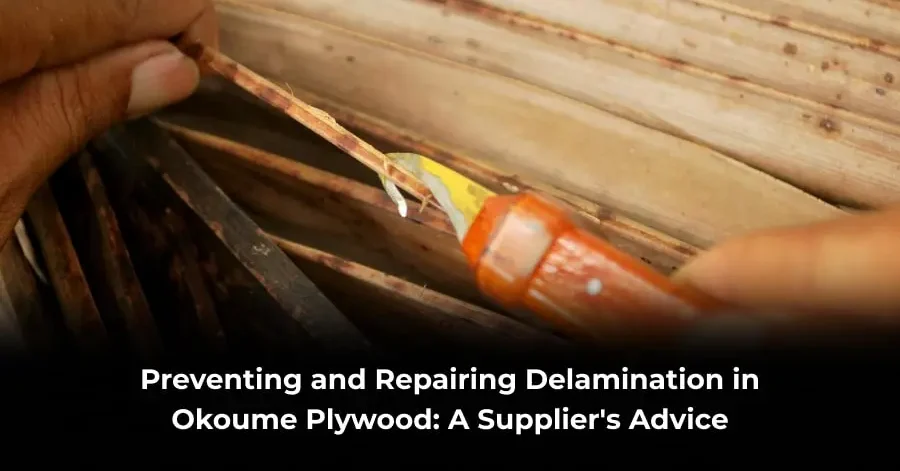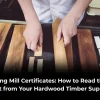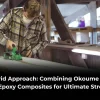If you’ve chosen Okoume plywood for your project, you already know you’re working with something special. Renowned for its light weight, beautiful smooth grain, and excellent bendability, this African hardwood is a favorite among boat builders, fine furniture makers, and custom cabinet creators. But let’s talk about the elephant in the room: delamination. There’s nothing more disheartening than seeing those once-tight layers of veneer begin to separate, threatening the integrity and beauty of your hard work.
As a trusted source for premium woodworking supplies, we’ve seen our share of projects, both triumphant and troubled. The good news? Delamination in Okoume marine plywood is almost always preventable, and often repairable if caught early. This guide isn’t just a technical manual; it’s a conversation from our workshop to yours, filled with practical advice to ensure your projects stand the test of time.
Understanding the “Why”: What Causes Delamination?
Before we can prevent or fix a problem, we need to understand its roots. Delamination occurs when the adhesive bonds between the layers of veneer in your Okoume plywood fail. This isn’t usually a fault of the Okoume wood itself, which is naturally stable, but rather a breakdown in the manufacturing process or, more commonly, how the plywood is treated afterward.
The primary culprits are:
- Moisture: The Arch-Nemesis: This is the big one. While high-quality Okoume marine plywood uses waterproof glue, the wood veneers are still hygroscopic—they absorb moisture from the air or direct contact with water. When the wood fibers swell with moisture and then dry out, this repeated expansion and contraction cycle creates immense stress on the glue bonds, eventually causing them to let go.
- Poor Quality Adhesive: Not all plywood is created equal. A panel marketed as “Okoume” but made with interior-grade glue will delaminate quickly when exposed to any significant moisture. True marine-grade plywood must use phenolic or other certified waterproof adhesives.
- Improper Storage: How you store your sheets before use is critical. Leaving them leaning against a damp wall, stored directly on a concrete floor, or exposed to the elements is a surefire recipe for trouble.
- Faulty Sealing: The edges of plywood are its Achilles’ heel. They are like open straws, sucking moisture directly into the core layers. Failing to properly seal every cut, drill hole, and the entire edge surface is the most common user-error leading to delamination.
An Ounce of Prevention: How to Keep Your Okoume Plywood Intact
Prevention is always cheaper and easier than repair. By integrating these practices into your workflow, you can virtually eliminate the risk of delamination.
- Start with the Right Stuff: Source from a Reputable Supplier
Your first and most crucial line of defense is buying quality materials. Don’t just look for the name “Okoume.” Ensure you are getting genuine marine-grade plywood. This certification means it was manufactured with fully waterproof (phenolic) glue and has a higher veneer quality with fewer core voids. A reputable woodworking supplies store will be transparent about the specifications and origins of their products. - Master the Art of Storage
Treat your Okoume plywood with care before it even touches your tools.
- Keep it Flat and Supported: Store sheets perfectly flat on a rack. If you must stack them, ensure the entire surface is supported by a flat, level base. Never store large sheets on their edges.
- Elevate and Circulate: Keep the sheets off concrete floors using wooden battens (stickers) to allow air to circulate on all sides.
- Climate Control: A dry, well-ventilated space is ideal. Avoid storing in damp basements or unsealed garages where humidity fluctuates wildly.
- The Golden Rule: Seal, Seal, and Seal Again
This cannot be overstated. The moment you cut into a pristine sheet of Okoume wood plywood, you have opened its internal structure to the environment.
- Seal the Edges: Before you even think about assembly, seal all the edges. This is non-negotiable. Use a dedicated wood sealer, epoxy, or multiple thin coats of a high-quality primer.
- Seal the Backsides and End-Grain: Don’t forget the backs of panels and any drilled holes or channels. Every exposed wood surface is a potential entry point for moisture.
- Complete Encapsulation: For projects exposed to the elements, like boats or outdoor furniture, the goal is to completely encapsulate the Okoume marine plywood in a protective barrier of epoxy and paint or varnish, creating a waterproof shell.
- Choose and Apply the Right Finish
The finish is your project’s suit of armor. For Okoume plywood, which is not naturally rot-resistant, the finish is critical.
- Epoxy System: The gold standard for marine and high-moisture applications. Epoxy penetrates deeply and creates an incredibly strong, waterproof bond that locks out moisture.
- Marine Varnish: Provides excellent UV protection and a beautiful finish but should typically be applied over an epoxy base coat for maximum moisture protection.
- Paint: A high-quality marine-grade paint, applied over a proper primer and sealer, offers fantastic protection and color.
The Repair Workshop: Fixing Delamination When It Happens
So, you’ve found a bubble or a soft spot. Don’t panic. While severe delamination may require replacing the entire panel, many cases can be successfully repaired.
For Small, Localized Delamination:
- Assess the Damage: Tap the area. A hollow sound indicates delamination. Mark the perimeter.
- Drill an Injection Hole: Using a small drill bit (1/16″ or so), carefully drill a few holes directly into the delaminated pocket. These are your access points.
- Dry it Out: It is crucial that the wood is dry for the repair to hold. Use a heat gun on a low setting, moving constantly to avoid scorching the beautiful Okoume wood, to drive out any moisture. Let it cool completely.
- Inject the Adhesive: Using a syringe, inject a thin, penetrating epoxy resin into the holes. You want an epoxy with a low viscosity so it can wick into all the tiny spaces between the veneers.
- Apply Pressure: Once the pocket is full, place a block of wood over the area and clamp it firmly. Use wax paper or plastic wrap between the block and the panel to prevent sticking. Wipe away any excess epoxy that squeezes out.
- Cure and Finish: Allow the epoxy to cure fully as per the manufacturer’s instructions. Once hard, sand the area smooth, re-seal the injection holes and the entire area, and apply your final finish.
For Larger or More Widespread Delamination:
Unfortunately, if a large section of the panel is delaminated or the structural integrity is compromised, repair is often not a viable long-term solution. The safest and most reliable course of action is to carefully replace the affected panel. It’s a tough lesson, but it underscores the importance of preventive care from the very beginning.
Also Read: The History of Wood Grading: From Traditional Rules to Modern Okoume Standards
Why Your Choice of Supplier Matters: A Note on AEW Woods
In the world of fine woodworking and boat building, the quality of your raw materials defines the ceiling of your project’s potential. This is precisely why we at AEW Woods are so passionate about what we do. We are more than just a woodworking supplies store; we are curators and craftsmen ourselves, and we understand the trust you place in the materials you buy.
When you source your Okoume plywood from AEW Woods, you are guaranteed a product that meets the highest standards. We meticulously select our Okoume marine plywood from mills that adhere to strict manufacturing protocols, ensuring the phenolic glue bonds are flawless and the veneer quality is exceptional. We know that a warped or delaminated sheet doesn’t just cost you money; it costs you time and passion. Our commitment is to provide you with wood that is not only beautiful but also reliable, allowing you to build with confidence and focus on the joy of creation.
Conclusion
Working with Okoume plywood is a pleasure that should be free from the worry of delamination. By understanding its vulnerabilities—primarily to moisture—and proactively defending against them through smart sourcing, careful storage, and, most importantly, meticulous sealing, you can ensure your creations remain solid and beautiful for a lifetime. Remember, the extra time you spend on preparation and protection is an investment in your masterpiece’s future. So, choose your Okoume wood wisely from a supplier you trust, treat it with respect, and build with the confidence that comes from using one of the finest materials available to the modern craftsman.
Frequently Asked Questions (FAQs)
- Is all Okoume plywood automatically marine-grade?
No, this is a critical distinction. “Okoume” refers to the species of wood. “Marine-grade” refers to the construction standard, specifically the use of waterproof glue and higher-quality veneers. Always confirm you are buying Okoume marine plywood for any project exposed to moisture. - Can I use standard wood glue to repair delamination in my Okoume plywood project?
We do not recommend it. Standard PVA (white or yellow) wood glue is not waterproof and will fail again. For a permanent repair, you must use a waterproof adhesive like a penetrating epoxy resin. - How long will an Okoume wood project last outdoors?
The lifespan is almost entirely dependent on the finish and maintenance. A properly sealed and encapsulated piece of Okoume marine plywood, protected with UV-resistant varnish or paint, can last for decades. Left unfinished, it will deteriorate quickly. - My local woodworking supplies store doesn’t carry marine-grade plywood. What should I do?
It’s worth seeking out a specialist supplier, even if it means ordering online from a reputable company like AEW Woods. Using the wrong type of plywood for a marine or high-humidity environment will lead to almost certain failure, wasting all your effort and investment. - Besides delamination, what other issues should I watch for with Okoume plywood?
The primary concern is its low natural resistance to rot and insects. It is also relatively soft, so it can be prone to denting. Both of these weaknesses are effectively mitigated by a robust, encapsulating finish system.






